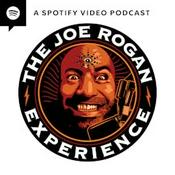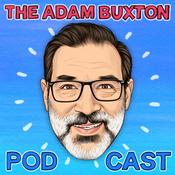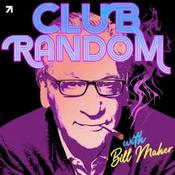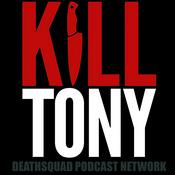69 episodes

Parts is (Not) Parts: The Life Cycle Problem for Heavy Equipment
2025/12/23 | 1h 3 mins.
Send us a textWe trace how Alex Schuessler, the once and once-again President of SmartEquip--also a scholar of expressive choice!--built a platform that makes machines more profitable by erasing the friction between parts, service, and uptime. The rental economy, Japan’s utilization model, and IoT diagnostics reveal why transaction costs, not price tags, decide who should own and who should rent.• rental vs sharing and why property rights matter• how serial-number specific data kills errors and downtime• why parts discounts matter less than service speed• Japan’s high saturation rental market and long lifecycles• sensors, IoT, and AI for damage attribution and prevention• decommoditizing parts through integrated workflows• Coasean boundaries of the firm and renting incentives• why RB Global acquired SmartEquip to span the lifecycle• the back-office puzzle of bespoke systems vs SaaS“Next week: Book 4, chapters 7–9 from The Wealth of Nations”(Parts is Parts, from Wendy's) https://youtu.be/OTzLVIc-O5E?si=Mjz8JX-Sl_sdG6bCSmartEquip web site: https://www.smartequip.com/schedule-demo/Announcement of Schuessler being (re)hired as President: https://news.ararental.org/schuessler-appointed-president-of-smartequipWhy Japanese "used" equipment commands a premium: https://everycar-review.com/2025/08/27/voices-from-global-dealers-why-japanese-used-machinery-is-their-first-choice/If you have questions or comments, or want to suggest a future topic, email the show at [email protected] ! You can follow Mike Munger on Twitter at @mungowitz

Money Killed Barter; Can a Platform Bring It Back?
2025/12/09 | 48 mins.
Send us a textWe explore why money became the default middleman and how a modern platform can make barter practical by slashing the costs of search, matching, and trust. Founder Jassim Baqer shares the story behind Tbadel, what people actually trade, and how reputation, bundling, and scale (might) make swaps work.• Adam Smith’s "double coincidence of wants" problem and transaction costs• Platforms as connection engines that lower search and matching costs• Tabottle’s origin, goals and name meaning exchange in Arabic• How offers, counteroffers and bundles enable fair value without prices• Building trust with profiles, ratings, in‑app messaging and reporting• Local meetups versus future delivery options to cut transfer costs• Why density and subcommunities unlock multi‑party and chain trades• What trades dominate now: books, electronics, kids’ gear and services• AI matching, alerts and global exchange as the growth roadmap• Two‑sided market dynamics and the path to scaleTbadel Web SiteJassim Baqer on LinkedInFrom JJ's letter: Photos of "Parklet" in San Francisco.If you have questions or comments, or want to suggest a future topic, email the show at [email protected] ! You can follow Mike Munger on Twitter at @mungowitz

Adam Smith Episode 7: The Errors of Mercantilism--Bullion, Balances, and Bounties
2025/11/25 | 1h 15 mins.
Send us a textTracing out Adam Smith’s Book IV, chapters 1–6, to show how mercantilism mistakes money for wealth, how protection creates monopolies at home, and why free exchange raises real prosperity. Smith defends two narrow exceptions—defense and tax parity—while rejecting bounties and politicized treaties that entangle trade with war.• mercantile vs physiocratic systems and their influence• wealth as goods and industry, not specie• balance of trade as a “pestilent error”• make-or-buy logic and misallocation from tariffs• invisible hand clarified and limited• natural vs acquired advantages in specialization• two exceptions: national defense and tax parity on imports• drawbacks as refunds vs bounties as subsidies• corn bounties, higher home prices, cheaper foreign prices• specie hoards as dams that inevitably overflow• treaties of commerce, Methuen example, political risk• case for unilateral free trade over reciprocityMentioned in the podcast:Laura Williams on PineapplesPineapples in SwedenOren Cass on Adam SmithDan Klein's Law and Liberty piece on Oren Cass on Adam SmithIf you have questions or comments, or want to suggest a future topic, email the show at [email protected] ! You can follow Mike Munger on Twitter at @mungowitz

Adam Smith's Wealth of Nations Episode 6--Division of Land
2025/10/21 | 1h 16 mins.
Send us a textWe trace how Adam Smith solves a historical puzzle: why Europe’s path to prosperity inverted the “natural order,” and how commerce quietly dissolved feudal power to make room for liberty. The story follows incentives, from primogeniture and entail to charters, free towns, and the market’s “silent and insensible” revolution.institutions as congealed preferences and elite incentiveswhy Smith’s natural order inverts in Europethe physiocrats’ growth model and Smith’s critiqueSolow’s technology vs North’s institutions vs McCloskey’s ideasJoel Mokyr's synthesis and improvement (written BEFORE he Nobel'ed!)feudal constraints primogeniture and entail suppressing agriculturetowns as islands of order through charters and fixed rentsthe king–burgher alliance against baronsmerchants as improvers of land and capital risk-takerscommerce introducing liberty and good governmentSmith’s “most important” passage and its modern relevanceIf you have questions or comments, or want to suggest a future topic, email the show at [email protected] ! You can follow Mike Munger on Twitter at @mungowitz

Little's Law: The Transaction Costs of (Re)Drawing Lines
2025/10/14 | 55 mins.
Send us a textA conversation with Andrew Wagner, production and manufacturing engineer, now in aerospace, but with experience also in the auto industry.We trace how transaction costs shape production, from Adam Smith’s pin factory to Toyota’s SMED, and why empowering workers and redesigning tools can raise quality while cutting cost. An aerospace manufacturing engineer joins us to unpack Little’s Law, line reconfiguration, and the culture that makes flexibility real.• division of labor limited by the extent of the market• sub shop and Chipotle as live line-balancing examples• Smith’s three productivity drivers applied to modern factories• Little’s Law guiding WIP, stations, and throughput• costly line changes and capacity planning in auto plants• meta-tools, CNC, and multi-operation automation• stamping dies, SMED, and Toyota’s flexibility edge• just-in-time, early error detection, and quality economics• U.S. responses: robotics, platforms, and Deming at Ford• NUMMI proof: same workforce, new system, better output• CAD parametrics, modular design, and clay by robot• structure by design: darts, curves, and manufacturability• specialization, ergonomics, turnover, and the $5 day• worker empowerment as applied Hayekian local knowledge• letter on bureaucracy, spending, and the social order book pickSome links:Workload modeling and "Little's Law"Little on Little's Law"Just In Time" inventory and manufacturingEdwards Deming's "14 Principles for Management" Book o'da'Month: Jacques Rueff, THE SOCIAL ORDERIf you have questions or comments, or want to suggest a future topic, email the show at [email protected] ! You can follow Mike Munger on Twitter at @mungowitz
More Comedy podcasts
Trending Comedy podcasts
About The Answer Is Transaction Costs
Listen to The Answer Is Transaction Costs, Conan O’Brien Needs A Friend and many other podcasts from around the world with the radio.net app

Get the free radio.net app
- Stations and podcasts to bookmark
- Stream via Wi-Fi or Bluetooth
- Supports Carplay & Android Auto
- Many other app features
Get the free radio.net app
- Stations and podcasts to bookmark
- Stream via Wi-Fi or Bluetooth
- Supports Carplay & Android Auto
- Many other app features


The Answer Is Transaction Costs
download the app,
start listening.






































